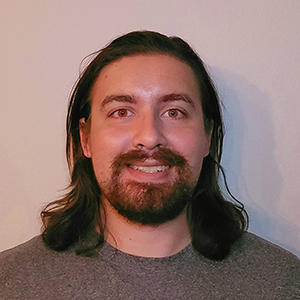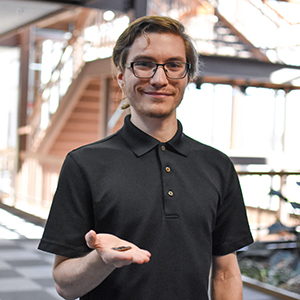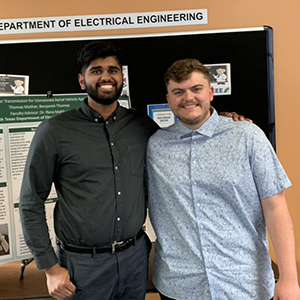
Two graduate students and two undergraduate students – all from the Department of Electrical Engineering – placed in their respective poster competitions at this year’s IEEE Metrocon.
In the graduate competition, Kieren Pae placed first and Nicholas Chiapputo placed second. In the undergraduate competition, Benjamin Thomas and Thomas Mather placed first.
Treating neurological disorders
Pae, who is a Ph.D. student at the iBioCASL Lab, is focused on developing a miniature device that could be implanted inside the brain to monitor and treat neurological disorders such as chronic pain and post-stroke paralysis. The project is sponsored by NSF.
"We want to look at how we could modify the brain waves to treat neuro-degenerative diseases, Parkinson’s and chronic pain," he said.
The wireless device would operate on a closed-loop system, recording data and transmitting it to an outside receiver.

Improving upon EKGs
Chiapputo’s work focused on rethinking EKGs, a test that records the electrical signal from the heart.
Currently, people experiencing chest pain or who have concerns about their heart have to set an appointment to have a cardiologist run the test and read the results. His goal is to create a small, wearable device that could record the heart’s electrical functioning and transmit that data to the cardiologist without the patient ever needing to step into the office.
"The device would be faster, more efficient, and, ultimately, reduce human error in collecting the data," he said.
Tackling drones
Thomas and Mather’s presentation tackled the issue of battery power for unmanned aircraft systems. Assistant Professor Ifana Mahbub and Ph.D. student Dipon Biswas from the Department of Electrical Engineering served as advisors for the project.

"Our end goal is to create a transmitter coil on a charging pad that could make it so the drone could charge wirelessly," said Thomas.
Using wireless power transfer, a drone could recharge from anywhere within the pad’s reach without having to land.
"By doing it this way, we could also remove the human element that’s currently needed now," said Mather. "You wouldn’t need to fly the drone back to the controller just to charge it; it could keep going on its path so long as there are charging pads available."